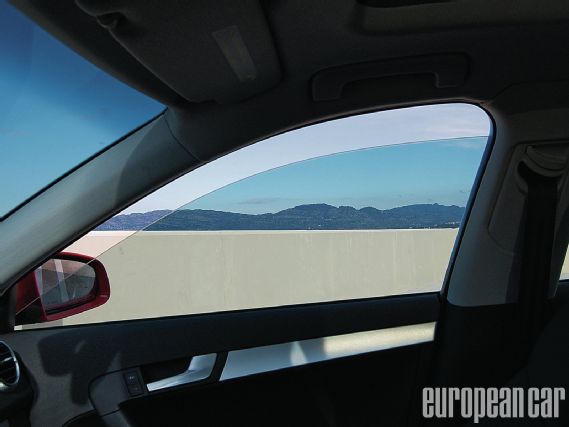 | 3M Crystalline Automotive Window Film - Product Spotlight
| 3M Crystalline Automotive Window Film - Product Spotlight
I remember the good old days of dark limo tint. No matter how cold the temperature, I’d have to lower all the windows whenever a cop came by. It didn’t always work. Got one fix-it ticket, and then a second and a third, all the while the fines increased. Sigh. Memories. As I got older, I gave up limo tint simply because it wasn’t worth the hassle or the cost. I learned to live with the scorching hot black leather seats in the summer, my left arm being more tan than the right and a few more age spots and wrinkles on my face.
Of course, my interest was piqued when I received an invite to a 3M product demonstration showcasing their Crystalline automotive window film, a new product that claims to have all the benefits of dark tint without the ensuing harassment.
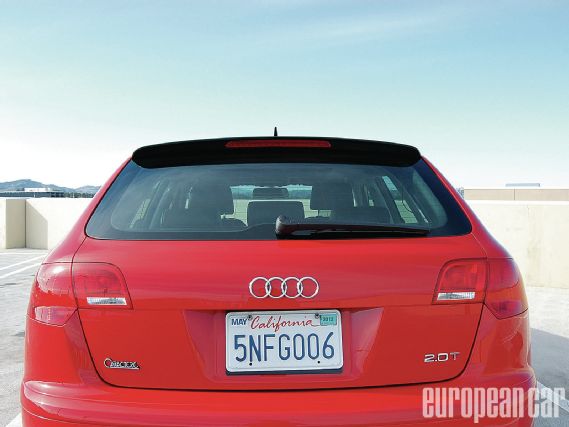 |
3M Crystalline Automotive Window Film - Product Spotlight
|
3M Crystalline Automotive Window Film - Product Spotlight
Part of the product presentation was a light box test that resembled an Easy-Bake Oven. A 100-watt bulb located in the back of a square box illuminated various glass panels coated with different types of tint you touched with your hand to feel the different degrees of radiant heat through the glass. With the non-tinted piece of glass, the amount of heat radiating through could cook my morning breakfast: an egg and slices of bacon. With the 5 percent standard limo tint, the heat was significantly reduced. But if you left your hand there, after a few seconds you could feel the heat starting to penetrate and build up. With the Crystalline 90, the lowest strength film available, my hand remained cool even after 30 seconds.
Giving up my limo tint was hard. Especially since I live in sunny Southern California, where temperatures in the summer are at least in the 80s and 90s but can peak to 110 degrees and higher. Any relief from the heat increases my quality of life as I have a penchant for black leather interiors and limited access to covered parking.
My absolute favorite car (and the one I have owned the longest) is my Audi A3. Over time, the heat has started to take its toll, bubbling the finish on the window switches, destroying the adhesive on the door strips and baking the sunshade latches on the OpenSky. It has gotten to the point where I can no longer latch the sunshades shut. To prevent further sun damage, I decided to have the A3’s windows, including the windshield and OpenSky panels, equipped with the 3M Crystalline film.
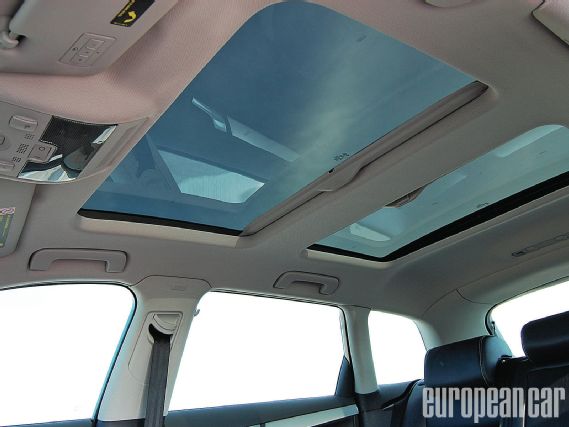 |
3M Crystalline Automotive Window Film - Product Spotlight
|
3M Crystalline Automotive Window Film - Product Spotlight
Applying tint is an art form. Anyone who has had a bad tint job knows the agony of having to stare through windows with bubbles or seams in the tint. Finding the right person with the right skills is extremely important. Moreover, the A3 has more than a few complex curves that are extra challenging.
Rocky from 3M recommended the Tint Factory in Los Angeles, one of 3M’s Prestige Dealers. When I contacted the Tint Factory, George was friendly and accommodating, not an easy task with my hectic schedule. The Tint Factory stands in the heart of an automotive district in downtown LA and looks relatively unassuming from the street. Upon arrival, Frank from the Tint Factory introduced himself as my tint installer. It soon became apparent why the Tint Factory has earned the title of Prestige. Frank should start introducing himself as “the OCD tint installer.” The guy has serious perfection issues. If it’s not perfect, it’s not leaving the Tint Factory.
Needless to say, the team at the Tint Factory did an amazing job covering the OpenSky and all the windows. They even put a cool matte racing stripe on the hood. The front windows and the windshield came out perfect—you can’t even tell there is any film on the windows. We decided to go with 3M Crystalline 70 on all the widows and the 3M Crystalline 40 on the two OpenSky roof panels.
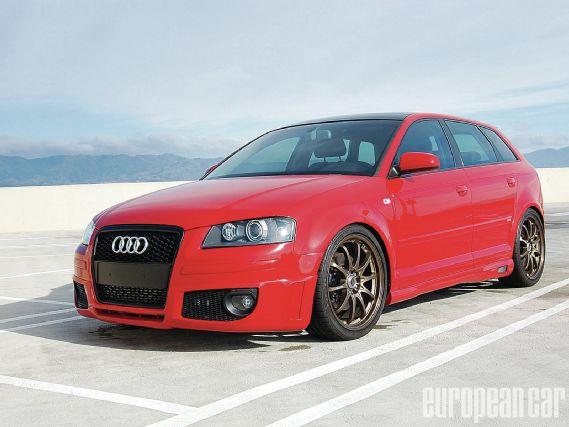 |
3M Crystalline Automotive Window Film - Product Spotlight
|
3M Crystalline Automotive Window Film - Product Spotlight
On the way to the Tint Factory, I could feel the sun’s rays pouring through the OpenSky glass roof, burning my forehead to a crisp no matter how much the A/C blasted. On the drive home, I noticed a significant difference and felt less like a piece of chicken under a heat lamp. With the 3M Crystalline tint, the windows appear totally factory stock; in fact, no one could even tell they were treated unless I told them. This tint was exactly what I wanted, all the heat blocking benefits without the costly side effects. As the summer progressed, I noticed my A/C setting wasn’t as low and I didn’t need to cover my left arm on long drives.
Features and Benefits
- 99.9% UV rejection is equivalent to Sun Protection Factor (SPF) 1700+, which protects occupants and precious cargo from the sun’s harmful radiation
- Reduced glare increases visibility
- Blocks up to 97% of the sun’s infrared rays and reduces incoming heat through the glass by up to 60%
- Visible light transmission reduced from as much as 90% all the way down to 40%
- Metal free design eliminates interference to cell phone, GPS, and satellite radio signals
- Limited lifetime manufacturer’s warranty against bubbling, peeling, blistering or purpling
- Proprietary multi-layer nanotechnology combines 200 layers of optical film into one super thin sheet, which allows a clear film to reject more heat than darker films
- Light tint options maintain your vehicle’s original appearance with all the benefits of darker tint
- Added safety and security for driver and passengers
3M Crystalline Automotive Window Films 40 used on Glass Roof Panels
- 39% visible light transmitted
- 60% total solar energy rejected
- 97% infrared rejected (IR for wavelength range of 900-1000 nm)
- 50% solar heat reduction
- 6% visible light reflection interior
- 7% visible light reflection exterior
- 99.9% UV rejected
- 56% glare reduction
3M Crystalline Automotive Window Films 70 on all remaining windows, including windshield
- 68% visible light transmitted
- 50% total solar energy rejected
- 97% infrared rejected (IR for wavelength range of 900-1000 nm)
- 38% solar heat reduction
- 9% visible light reflection interior
- 9% visible light reflection exterior
- 99.9% UV rejected
- 23% glare reduction
The Secret Language of window tint
Visible Light Transmitted (VLT) is the percentage of visible light that passes through the clear glass after the Crystalline film has been applied. The higher the number means the greater amount of light that can pass through. For example the Crystalline 70 will allow 69% of exterior light to enter the vehicle versus the Crystalline 40 film that only allows 39% of light to come through the glass.
Total Solar Energy Rejection (TSER) is the percentage of radiant heat and light rejected by 3M’s Crystalline film after it has been applied to clear glass. The higher the number, the more solar energy is blocked from entering the car. For example, Crystalline 70 blocks 50% of exterior solar energy from entering the car, where Crystalline 40 will block 60% of solar energy.
Infrared Rejection (IR) is the percentage of infrared light within the wavelength range of 900-1000 nm that the Crystalline film when applied glass prevents from passing through. The greater the IR number, the less you feel like you are in an Easy-Bake Oven as you drive down the road.
Visible Light Reflection (VLR) is the percentage of visible light reflected off the Crystalline film.
Ultraviolet Rejection (UV) is the percentage of harmful UV light that the 3M Crystalline film prevents from entering the vehicle and piercing your skin and seats. UV rays are damaging and are responsible for the fading and deterioration of your car’s interior, plus damaging and aging your skin.
The temperature data used to create the graphs was gathered using four LogTag TRIX-8 temp recorders placed inside and outside of the A3. Four were taped inside and strategically placed on each side of the front dash and two on the rear parcel shelf. One recorder was taped to the Caractere side skirt with the sensor pointing out. Exact replication of testing conditions without a laboratory was impossible but were pretty close. Testing of Audi’s OEM glass was performed on May 27, 2011 and the 3M Crystalline test performed on June 24, 2011. The A3 was parked in the exact same spot, atop a five-story parking structure in Van Nuys, California. It was difficult to find a day where the outside temperatures were exactly the same, after several attempts the June 24th date offered the closest temperature profile for most of the test time frame.
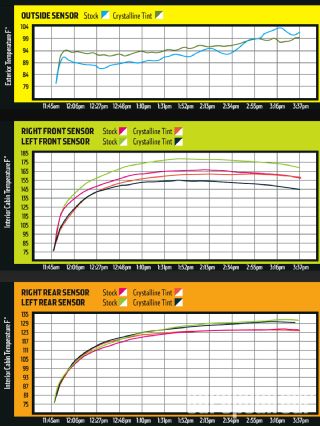 | 3M Crystalline Automotive Window Film - Product Spotlight
| 3M Crystalline Automotive Window Film - Product Spotlight
